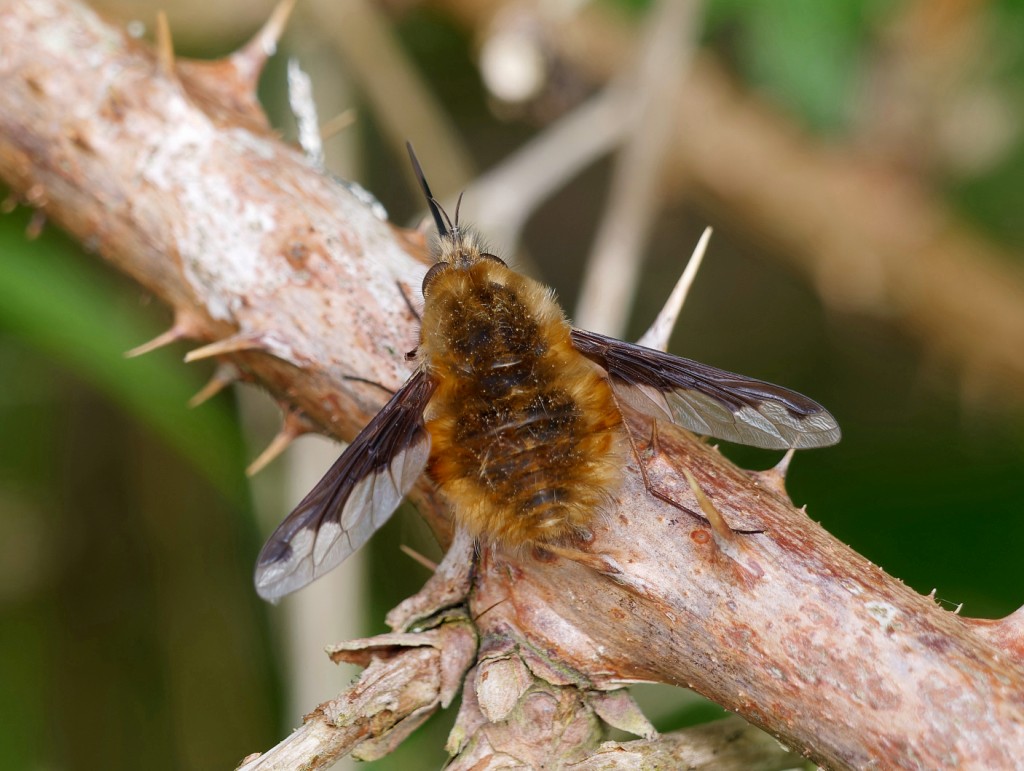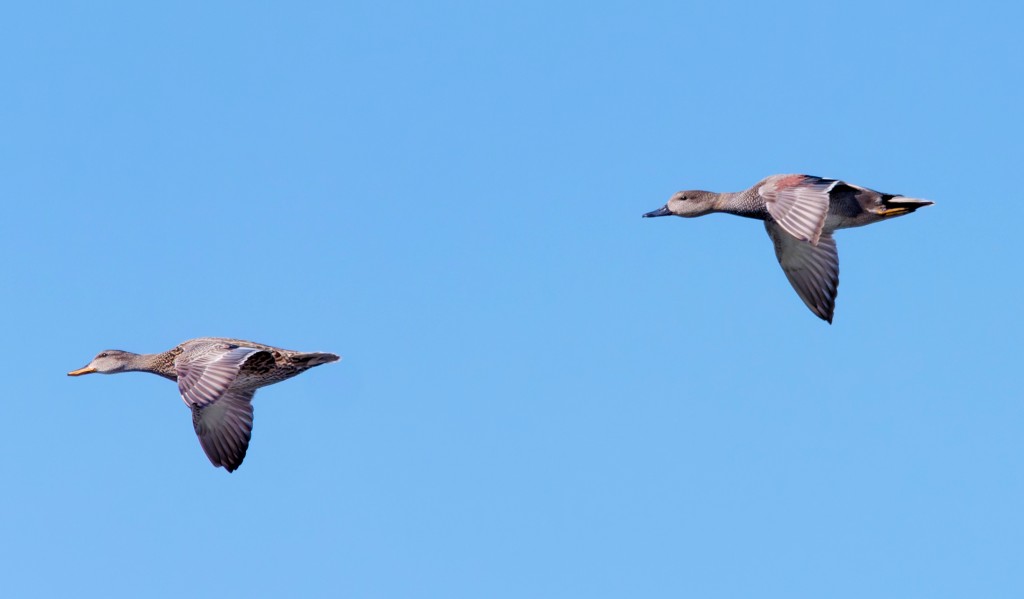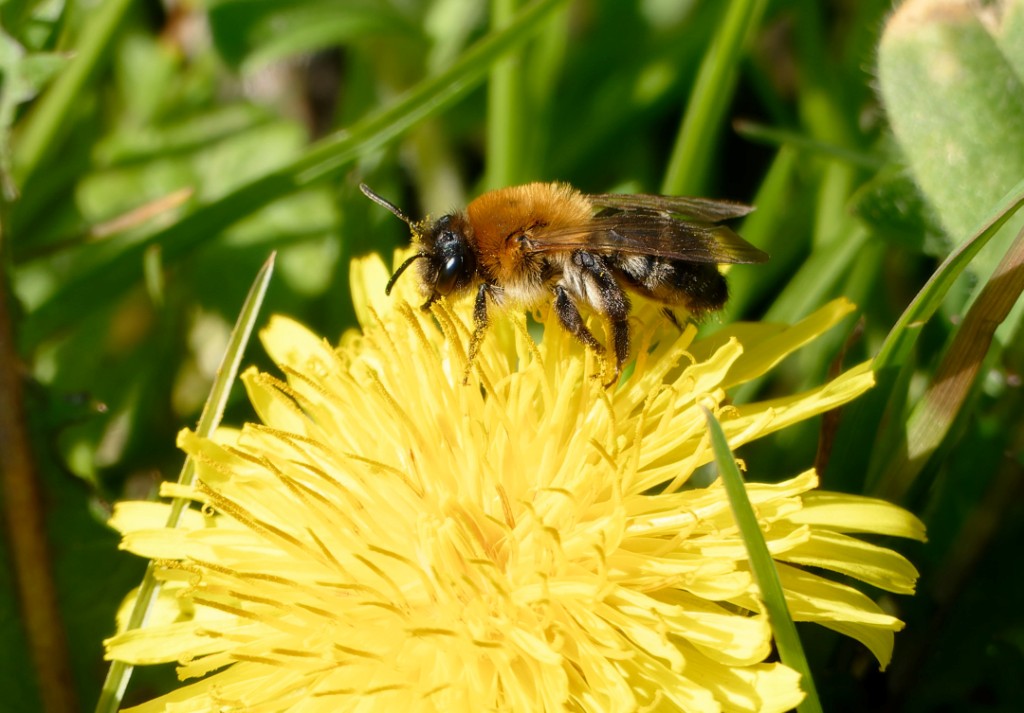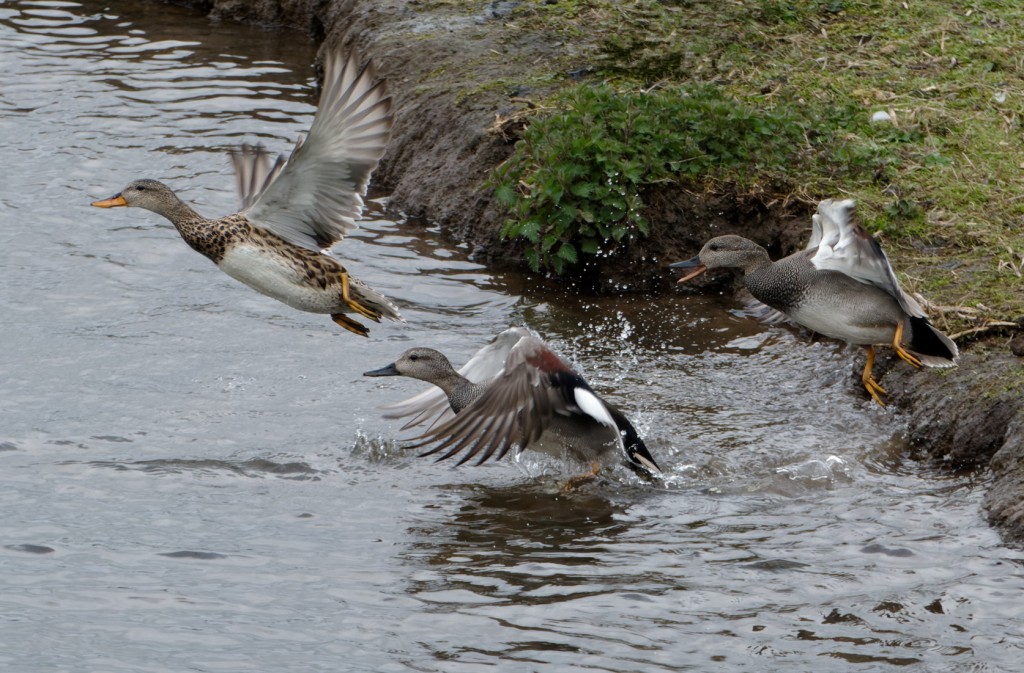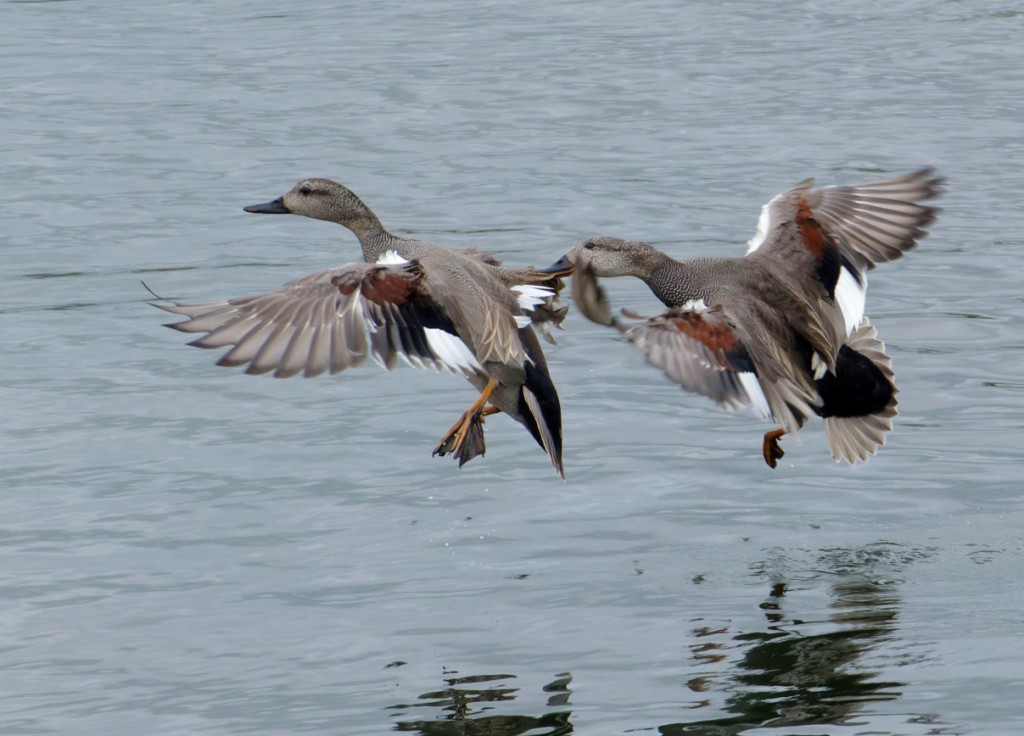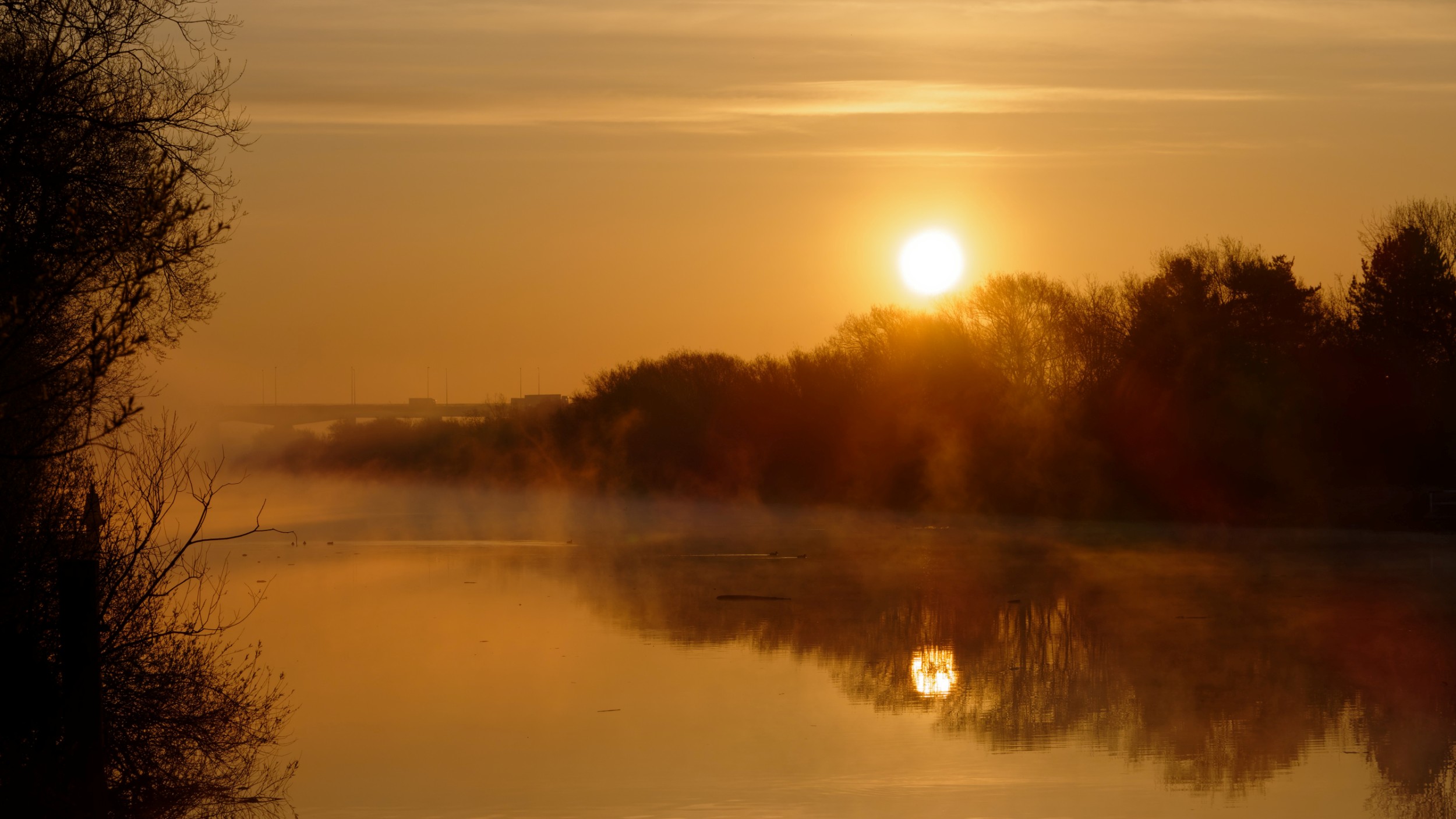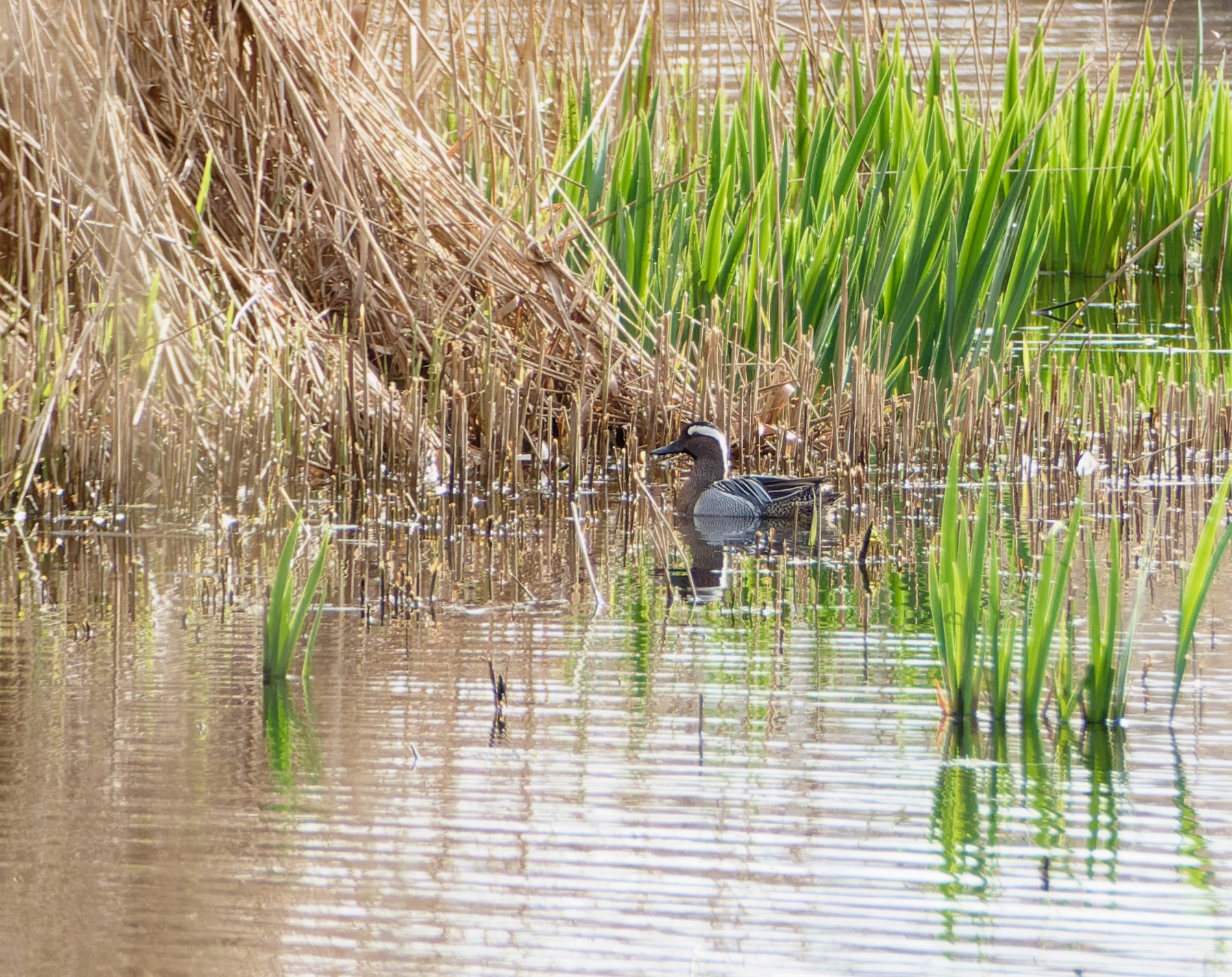Woolston Eyes Monthly Sightings
2023-04-29
We mainly spent the morning scanning for migrants from the viewing platform on No.4 bed. While there was no sign of yesterday’s Avocets, waders were the main feature, with 8 Dunlins, 2 Common Sandpipers, 2 Little Ringed Plovers, 2 Oystercatchers and a Snipe noted. In addition, it was pleasing to see 11 Swifts hawking to the west of the bed, which may have been early returners to the Westy Estate breeding colony, while the 8 Yellow Wagtails which passed over was a good count for us. On No.3 bed, we checked our clump of the attractive plant Solomon’s Seal to photograph the Solomon’s Seal Sawfly, the larvae of which live on this particular plant and can leave the leaves with more holes than a cullender. Fortunately, this tends to happen after flowering and the plants tend to regenerate happily the following year. Two interesting events to report, too. A Willow Tit, which was trapped on No.3 bed last Saturday was already ringed but not by one of our ringing teams. Turns out it was originally ringed at Elton, near Bolton, last summer, 15 miles to the north of the Reserve. Willow Tits rarely move far and in more than forty years of ringing, this is the first one to arrive from another site. Finally, last summer, Pete Boardman from Natural England kindly undertook an invertebrate survey for us. Little did he know that in doing so he would turn up a new beetle for the UK - Glischrochilus grandis, an Eastern European species and yet another addition to the Reserves’ extensive species’ list. Photo of a Bee Fly Cheers David Bowman (with Dan Owen, Helen Wynn and Sue Haddock)
Submitted by: David Bowman
2023-04-25
That was a spectacular spring morning, frosty at dawn but becoming genuinely warm, followed by some great birds and a nice surprise at the end. As is often the case, most of the best sightings were early on, with a Cuckoo callling on No.3 bed, where 3 Pintail were also in a courtship chase, again raising hopes that these very scarce ducks will stay to breed. No.4 bed produced Wood Sandpiper, Ruff, a very early Swift, Little Ringed Plovers, Common Sandpiper, Lesser Whitethroat, plus Yellow and White Wagtails, the first two of which are very scarce visitors to the Reserve. We were just settling for lunch in the Morgan Hide when 2 adult Mediterranean Gulls flew in, followed shortly by a call to let us know that the Hoopoe, which had turned up on Rixton Moss yesterday had been relocated. The moss is barely half a mile from the north-east boundary of the Reserve so we were soon there and enjoying great views of this charismatic migrant from Africa, which has over-shot its breeding grounds in Southern Europe and is a very rare bird to see in Cheshire. Photo of a pair of Gadwall in flight Cheers David Bowman (with Dan Owen)
Submitted by: David Bowman
2023-04-18
Clear skies and a fresh easterly always bring the promise of something different turning up and this morning didn’t disappoint. It was a good, early start on No.4 bed, with 3 Little Egrets, 1 Curlew, 3 Whitethroats, 26 Blackcaps, 40 Chiffchaffs, 12 Willow Warblers and 6 Reed Warblers. Walking off the bed a Ring-necked Parakeet was calling before flying out of the flooded woodland. These exotic introductions are starting to appear more regularly on the Reserve and I don’t think it’ll be long before they establish themselves as a breeding species. Then it was on to No.3 bed, where 14 (possibly 16) Black-necked Grebes were keeping a low profile, with others likely to already be on nests, while an early Lesser Whitethroat was a nice addition to the morning’s list. Then came the day’s highlight, when 2 Spoonbills came in from the east, circled the bed several times, threatening to land in front of the Morgan Hide, before drifting off eastward. Although this was only our fourth ever record of Spoonbill, they are now well established as a breeding species in Southern England and are threatening to breed in the north-west, so maybe they’ll be more frequent in the near future. Finally, our decision not to cut our grass paths till the Dandelions have set seed is now paying off, with plenty of butterflies, bees and hoverflies feeding on them.
Photo of an Andrena sp. of bee
Cheers David Bowman (with Dan Owen)
Submitted by: David Bowman
2023-04-15
Well, that was another wonderful spring morning, with a hard frost and an enveloping ground mist at dawn, followed by warm sunshine and some nice birding surprises. We started in the Morgan Hide where a tern proved impossible to identify as it flitted through the mist, though it was probably the Common Tern which was around later in the morning. The Sand Martin roost on the bed continues to hold plenty of birds, with a minimum of 500 estimated overnight. Then it was a full survey of No.1 bed before a chilled couple of hours scanning from the viewing platform on No.4 bed. Highlights included: three Goosanders (a male and two females) in an area where they’ve bred before, two Ringed Plovers, five Little Ringed Plovers, four Black-necked Grebes on the new wetland and most unexpectedly, two Barnacle Geese which flew over No.4 bed and seemed to drop in to No.3 bed. As the day warmed, butterflies started to appear, with 1 Speckled Wood, 2 Orange Tips, 1 Peacock and 5 Small Tortoiseshells noted. Photo of a Gadwall courtship chase. Cheers David Bowman (with Dan Owen and Brian Baird)
Submitted by: David Bowman
2023-04-13
A cool, blustery westerly didn’t stop a steady trickle of passage this morning. On No.4 bed a Yellow Wagtail flew north while a Redwing sat and sang, prior to its long north-easterly journey to its Scandinavian breeding grounds. Two early Common Terns arrived on No.3 bed from the east, one of which stayed to try and feed, despite the attentions of the Black-headed Gulls. Just 420 of the latter were present, which is low by our normal standards for this time of year, so we’re hoping for an influx as the weather warms. Similarly with Black-necked Grebes, as we located just 11, though I’m sure quite a few are already on nests. Warmer weather will surely bring in plenty more. Hirundine passage was steady all morning, with 19 House Martins, 60 Swallows and 320 Sand Martins by lunchtime. Courtship activity among the wildfowl was constant, too, with many of the 100 or so Gadwall in front of the Morgan Hide in courtship chases and more at least 48 Pochard displaying and pairing. Reed Warbler song was more evident and it shouldn’t be too long before the first Whitethroat arrives. Photo of two drake Gadwall Cheers David Bowman (with Dan Owen)
Submitted by: David Bowman
2023-04-08
Well, that was my favourite kind of morning at Woolston Eyes. Early spring, with clear skies, an overnight frost and walking onto No.3 bed through tendrils of ground mist to the raucous sound of the breeding Black-headed Gull colony. Dawn saw a roost of 250 Sand Martins leaving the bed , while a female Marsh Harrier and 15 Black-necked Grebes were the other highlights. We then did a breeding bird survey of No.2 bed, which is always interesting as we tend to give this operational bed, which receives dredgings from the Ship Canal, much less attention than the other three beds. The pumping regime on the bed produces a really interesting mix of habitats, with a mix of pools and flooded woodland. The count included 36 Chiffchaffs, 6 Blackcaps, a pair of Willow Tits and 5 Cetti’s Warblers. Then it was over to No.4 bed, where the wetland held two Little Ringed Plovers, a pair of Willow Tits and two more Black-necked Grebes. Butterflies were starting to appear in the warm sun, too, with 3 Orange Tips, 2 Commas and 6 Small Tortoiseshells. Photo of the sunrise over the Ship Canal. Cheers David Bowman (with Dan Owen)
Submitted by: David Bowman
2023-04-06
It was an excellent morning for variety. Between us, Dan and I covered No.3 and 4 beds, before joining forces on the latter. Initial totals included: 1 Sedge Warbler, 2 Reed Warblers, 15 Black-necked Grebes, 3 Marsh Harriers, 2 adult Mediterranean Gulls, 2 Little Ringed Plovers, 5 House Martins, 9 Swallows, 350 Sand Martins, 1 Fieldfare, 22 Redwings, 7 Willow Warblers, 9 Blackcaps and 64 Chiffchaffs. The best came mid-morning, though, when two Garganey gave close views just before Dan scoped a very distant swift sp., possibly an Alpine Swift. By the time I got on to it it was impossible to see any detail which was extremely frustrating. as it continued to drift away over No.2 bed before eventually being lost to sight. Record shot of the drake Garganey Cheers David Bowman (with Dan Owen)
Submitted by: David Bowman

